Set Your Friend Free From the Power Cord!
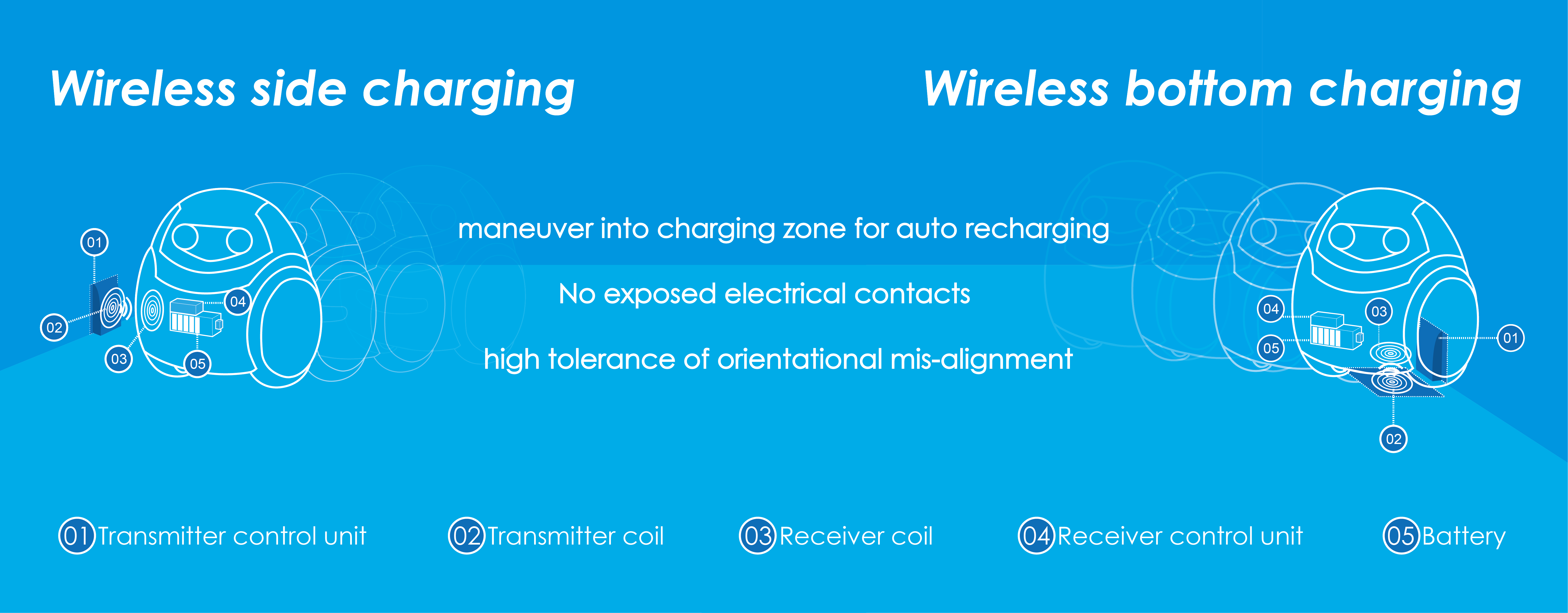
At jjPlus we’ve focused deeply for the past few years on how to charge a cell phone through tables and thick surfaces and have completed shipments of thousands of wireless power systems for the deployment in the public infrastructure charging. But what we really wanted to do is getting rid of the power cord, which is actually the last wire connected to the devices we use today.
We believe that Magnetic Resonance will be the key enabling factor to free the world of power cords like WiFi did for the ethernet cables. And its advantages will be utilized for not just wireless charging but more importantly, wireless powering that will effectively drive the widespread implementation of wireless power into millions of products.
Magnetic Resonance Method of Wireless Power Transfer Technology for Robotics Charging
The following article presents the Magnetic Resonance method used by jjPlus for robotics charging with some background information on the various types of wireless power transfer technologies as the supplemental reading so that the decision to implement wireless robotics charging can be made with in-depth domain knowledge. jjPlus has recently finished the development of several wireless power transceiver module pairs with small footprints which are ideal for embedding into robotics products for wireless charging. A transceiver module pair consists of a transmitter module and a receiver module, carefully tuned to be highly resonant with each other in order to accomplish efficient wireless power transfer.
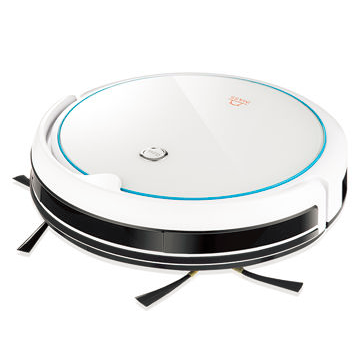
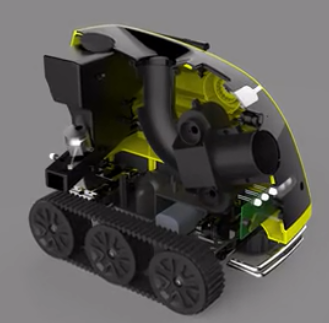
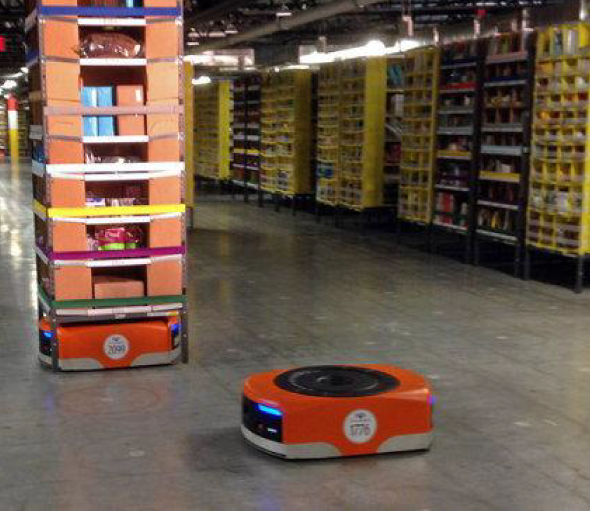

The transmitter module transmits “resonant power” from the surface area of its antenna (coil) defined by X & Y = power area and to a Z = height which is the distance from the antenna surface. The receiver module, when positioned within the space defined by X, Y and Z, receives the resonant power and performs the necessary conversions to supply to a load which is typically the battery to be charged.
Key advantages of magnetic resonance wireless power transfer
- the ability to transfer power wirelessly at a distance
- the ability to offer high tolerance of orientational mis-alignment between the transmitter and the receiver
- the ability to power through thick surfaces of various types i.e. wood, glass, stone, water etc.
- the ability to power multiple devices i.e. a single transmitter to multi-receivers configuration
- compared with Magnetic Inductive systems working in the KHz range, jjPlus’ 6.78MHz Magnetic Resonance system is much less prone to heating un-intentional metal objects, such as coins/watches to dangerous temperatures
Merits of embedding resonant wireless charging in robots
- Autonomy
key enabling factor for autonomous robots to remain autonomous when they decide to maneuver into the charging zone for an automatic wireless recharging/power snacking
- High successful rate of auto recharging
with high tolerance of orientational mis-alignment between the transmitter and the receiver, the robot does NOT need to dock with absolute precision for auto recharging. Instead, the robot, embedded with a receiver, simply approach its transmitter charging base (typically located in the floor or wall) and charging will begin automatically
- Durability, diversity of user cases and safety
since there is no external power port, robots can be hermetically sealed for water proofing, dust proofing, etc. Such added protection from environmental elements means more durability and enables even more user cases and environments in which robots can be deployed. Futhurmore, since there is no exposed electrical contacts, the possibilities of hazardous use is reduced to minimum - Enabling charging/powering on the fly
with jjPlus’ development of large-surface-area wireless power, dancing/rotating/working robots can continuously receive resonant power if they remain within the surface-area “podium” provided without ever the need to stop for re-charging. Only resonant wireless power can open up this awesome potential
Background: Various types of wireless power transfer technologies
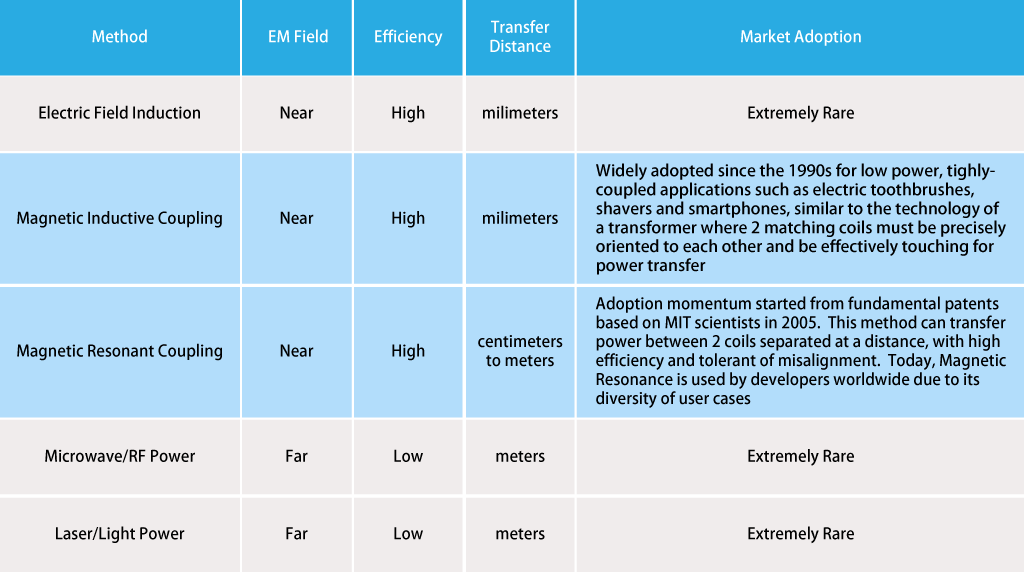
In general, today’s wireless power transfer technologies can be divided into 2 major categories, far field and near field. In far field or radiative technique, power is transferred by beams of electromagnetic radiation such as Microwave, Radio Frequency, Laser or Light. These techniques can transfer power over longer distances with advanced beamforming and energy harvesting method but due to the fact that air is a poor medium for the conduction of power/energy, the environmental loss is large and therefore the transfer efficiency is low. The near field or non-radiative technique uses either the electric field/capacitive coupling or magnetic field/inductive coupling to achieve wireless power transfer. Its advantage is that high transfer efficiency can be achieved but its weakness is the transfer distance is limited.
The magetic field coupling technique is a much more matured technology over the electric field coupling technique and has been selected by the developers in the past 2 decades to bring products to mass market with wireless charging. For the 2 types of magnetic field coupling technique, the Magnetic Inductive Coupling has been widely adopted since the 1990s for charging the batteries of electric toothbrushes and shavers. Additionally, various types of charging pads and charging stands use the Inductive method (examples are the Qi and PMA standard) to charge the batteries of today’s mobile devices such as smartphones.
The Magnetic Resonant Coupling technique received great attention in 2005 as the result of the release of research papers and patents from MIT (Massachusetts Institute of Technology) that took the Magnetic Field Coupling technique to a new height – the ability to deliver wireless power at a distance with high efficiency by the method of Magnetic Resonant Coupling. jjPlus is an early adoptor of Magnetic Resonance technology (being a licensee and product realization partner of the WiTricity Corporation) with a large porfolio of own patents and has been developing wireless power transfer solutions for the past 5 years including the wireless power solution for the world’s 1st commercially available wireless powered notebook and the world’s 1st AirFuel Resonant certified power transmitter.
Background: Inductive vs Resonant
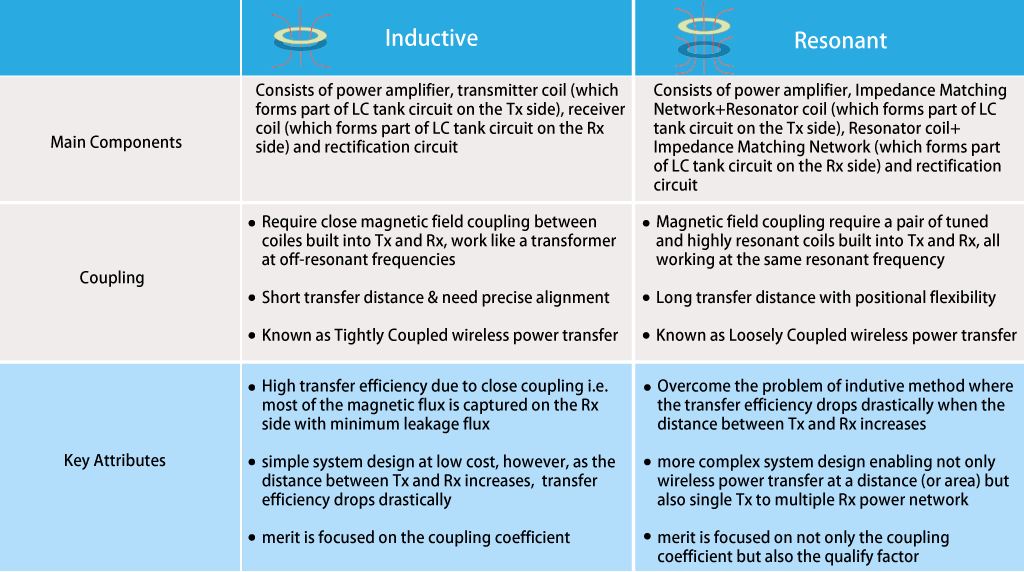
The inductive type wireless power transfer system consists of an amplifier, transmitter coil, receiver coil and rectifying circuit. The transmitter side and the receiver side are electrically isolated by an “air gap”. The system works like an transformer working at off-resonant frequencies where the transmitter antenna (coil) is driven by an AC current generating an alternating magnetic field and this alternating magnetic field will induce an AC current in the nearby receiver antenna (coil) which will then be rectified to supply power to a load. The advantage of Inductive wireless power transfer is it’s low cost, because the system is simple, but as the distance between the transmitter and receiver increases, the power transfer efficiency drops drastically due to reduced magetic coupling.
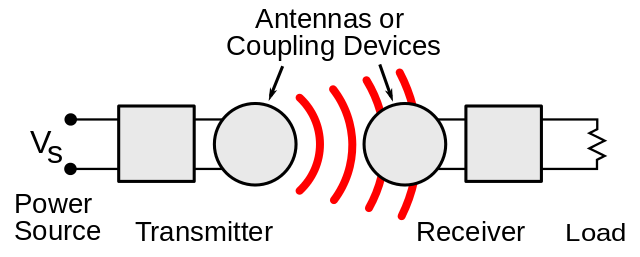
The resonant type wireless power transfer is the method which has emerged to overcome the drop in efficiency due to the increase in distance between the transmitter and receiver. It is actually a special case in magnetic induction method where the system works at the same resonant frequency between the transmitter resonator and the receiver resonator as a pair. It is a more complex system design, however, it not only enables wireless power transfer at a distance or area, but also multiple device charging or powering with a single transmitter.
The resonant type wireless power transfer focuses not only on the coupling coefficient K but also on the quality factor Q. The figure of merit of resonant wireless power transfer efficiency is a product of K and Q. Therefore, when the distance between the transmitter and the receiver increases causing a small coupling coefficient value, by designing the coils with high quality factor can still overcome the distance issue and achieve high transfer efficiency.


Getting prepared to embed resonant wireless charging into your robot
The followings are important questions to consider before engaging a project to embed wireless charging:
1. What’s the USE CASE that requires wireless power transfer?
2. Based on the above-mentioned use case, why will such BENEFIT from the advantages offered by Magnetic Resonance?
3. What’s the MAXIMUM POWER needed for the load? (typically it is a battery to be charged)
4. What’s the POWER CAPACITY of the battery in terms of WATT HOUR and what’s the CHARGING VOLTAGE and CURRENT required?
5. What’s the TARGET CHARGING TIME for a full charge?
6. What’s the MINIMUM and MAXIMUM wireless power transfer DISTANCE and AREA required?
7. How much available ALLOWED SPACE is provided for integrating a footprint of 1. the receiver module into the robot and 2. the transmitter module into the charging/powering base for the robot?
8. What’s the TARGET COST for integrating wireless power and what’s the TARGET MSRP of the robot?
9. What’s the project TIME LINE from the start of design to production transfer?
10. What’s the TOTAL QUANTITY projected versus TIME for the life cycle of the robot?
Ready to embed resonant wireless charging into your robot? We can help!
OR Contact Direct:
Sales@voltraware.com
Chief Marketing Officer, jjPlus Corp.